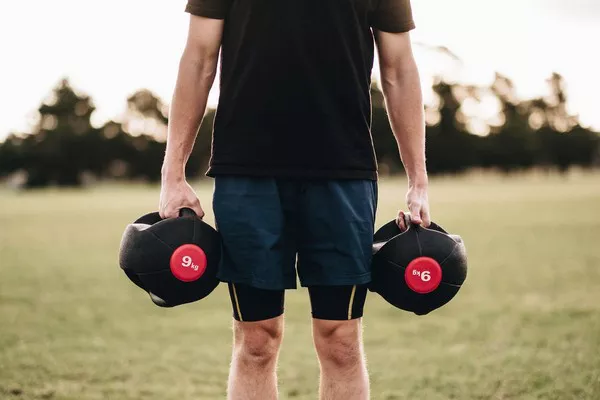Strength training is a fundamental aspect of any well-rounded fitness routine. Whether you’re looking to enhance your athletic performance, improve your overall health, or simply transform your physique, a well-structured strength training program is key. For beginners embarking on their fitness journey, it’s essential to start with the right program to ensure a strong foundation. In this article, we will explore the best strength training program for beginners, highlighting the importance of strength training in achieving fitness goals.
Understanding the Basics of Strength Training
Before delving into the specifics of the best strength training program for beginners, it’s crucial to grasp the basics of strength training itself. Strength training, often referred to as resistance training, involves the use of resistance – such as weights, resistance bands, or body weight – to build muscle and increase strength. This form of exercise has a multitude of benefits, including:
Improved Muscle Strength and Endurance: Strength training helps increase your muscle strength and endurance, making daily activities easier and reducing the risk of injury.
Enhanced Metabolism: Building lean muscle through strength training can boost your metabolism, aiding in weight management and fat loss.
Bone Health: Strength training is beneficial for bone health, reducing the risk of osteoporosis and fractures.
Better Posture: It can improve posture by strengthening the muscles that support your spine and shoulders.
Enhanced Mental Health: Regular strength training can have positive effects on mental health, reducing symptoms of depression and anxiety.
Now that we’ve highlighted the importance of strength training, let’s explore the best strength training program tailored for beginners.
The Best Strength Training Program for Beginners
When designing a strength training program for beginners, it’s essential to focus on building a solid foundation while minimizing the risk of injury. Here’s a comprehensive guide to the best strength training program for beginners, divided into several phases:
Phase 1: Establishing the Basics (Weeks 1-4)
In the initial phase of your strength training journey, it’s crucial to lay the groundwork for more advanced exercises. Focus on compound movements that engage multiple muscle groups simultaneously. The key exercises for this phase include:
Squats: Squats are a fundamental lower-body exercise that targets the quadriceps, hamstrings, and glutes. Perform 3 sets of 10-12 repetitions.
Push-Ups: Push-ups are an excellent upper-body exercise that works the chest, shoulders, and triceps. Aim for 3 sets of 8-10 repetitions.
Dumbbell Rows: Dumbbell rows strengthen the back muscles. Start with 2 sets of 10-12 repetitions per arm.
Planks: Planks are a great core-strengthening exercise. Hold each plank for 30-45 seconds, aiming for 3 sets.
Strength Training for Beginners – Phase 2: Building Strength (Weeks 5-8)
In this phase, you’ll increase the intensity and volume of your workouts to build more strength. Gradually increase the weight or resistance for each exercise as you become more comfortable. Key exercises include:
Deadlifts: Deadlifts are a powerful full-body exercise that strengthens the posterior chain – the muscles of the lower back, glutes, and hamstrings. Perform 3 sets of 8-10 repetitions.
Bench Press: The bench press targets the chest, shoulders, and triceps. Aim for 3 sets of 8-10 repetitions.
Lat Pulldowns: This exercise targets the latissimus dorsi (lats) and is excellent for developing upper-back strength. Start with 3 sets of 10-12 repetitions.
Plank Variations: To challenge your core further, incorporate side planks and forearm planks into your routine. Hold each variation for 30-45 seconds.
Strength Training for Beginners – Phase 3: Progressive Overload (Weeks 9-12)
Progressive overload is a fundamental principle of strength training. It involves gradually increasing the weight or resistance to continue challenging your muscles. In this phase, you’ll further increase the intensity of your workouts:
Squat Progression: Continue with squats but aim for heavier weights or more challenging variations, such as goblet squats or front squats. Perform 4 sets of 6-8 repetitions.
Overhead Press: The overhead press works the shoulders and triceps. Aim for 4 sets of 6-8 repetitions.
Pull-Ups or Assisted Pull-Ups: If you have access to a pull-up bar, incorporate pull-ups or use assistance as needed. Start with 3 sets of 6-8 repetitions.
Plank Challenges: Increase plank duration or try more advanced variations like plank leg raises. Hold for 45-60 seconds per set.
Strength Training for Beginners – Phase 4: Maintaining and Expanding (Weeks 13 onwards)
By this point, you will have developed a strong foundation and the ability to perform more complex exercises. In this phase, you can start incorporating additional exercises like lunges, kettlebell swings, or cable exercises to keep your workouts diverse and engaging.
Lunges: Lunges are excellent for targeting the quadriceps, hamstrings, and glutes. Perform 3 sets of 10-12 repetitions per leg.
Kettlebell Swings: Kettlebell swings are a dynamic exercise that engages the entire posterior chain. Start with 3 sets of 12-15 repetitions.
Cable Exercises: Explore cable exercises such as cable curls, cable tricep extensions, and cable flyes to add variety to your routine. Perform 3 sets of 10-12 repetitions for each exercise.
Strength Training for Beginners – Phase 5: Listen to Your Body
Throughout your strength training journey, it’s crucial to listen to your body. If you experience pain, discomfort, or excessive fatigue, it’s essential to rest and recover. Adequate rest and recovery are just as vital as the workouts themselves in preventing overuse injuries and promoting muscle growth.
Strength Training for Beginners – Phase 6: Nutrition and Hydration
Strength training goes hand in hand with proper nutrition and hydration. Ensure you’re consuming an adequate amount of protein to support muscle growth and repair. Stay hydrated to optimize your performance and recovery.
Strength Training for Beginners – Phase 7: Seeking Professional Guidance
Consider consulting with a certified fitness trainer or a physical therapist to ensure you’re performing exercises with proper form and technique. They can provide personalized guidance and make necessary adjustments to your program based on your goals and abilities.
Conclusion
Strength training is a powerful tool for beginners seeking to improve their overall fitness and well-being. By following a well-structured strength training program that progresses in intensity, you can build a strong foundation and achieve your fitness goals. Remember that consistency, proper nutrition, and listening to your body are key to a successful strength training journey. So, embark on your fitness journey today, and experience the countless benefits that strength training has to offer.
[inline_related_posts title=”You Might Be Interested In” title_align=”left” style=”list” number=”6″ align=”none” ids=”2720,2685,2530″ by=”categories” orderby=”rand” order=”DESC” hide_thumb=”no” thumb_right=”no” views=”no” date=”yes” grid_columns=”2″ post_type=”” tax=””]


































